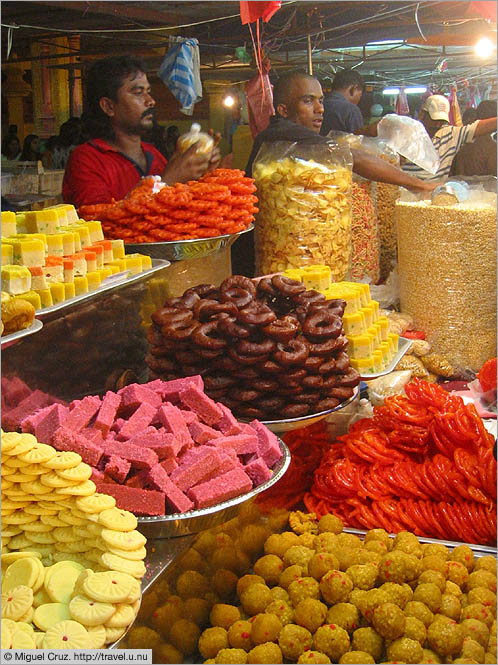Indian London
Indian London
BBC - 26 May 2005
Indian people have made many remarkable contributions to the various aspects of London life. They've made a huge contribution to business as well as introducing Bollywood films to Bhangra music to the Capital.
There are about one and a half million South Asians in Britain, with a significant proportion residing in the London area. The term ‘South Asian’ refers to peoples with ethnic origins from the Indian subcontinent.
As well as India, this area is made up of countries like Bangladesh, Pakistan and Sri Lanka. It is estimated that nearly half of the South Asians in Britain are of Indian descent. In 1600, relations between Britain and India began when Elizabeth I granted the British East India Company permission to trade in South Asian spices and silks.
Indian sailors, known as the Lascars, were employed on board British ships on short-term contracts. They were often abandoned in port until their next ship sailed back to India, so in 1857 in Limehouse, the Strangers' Home for Asiatics, Africans and South Sea Islanders opened to provide temporary accommodation for stranded sailors. The Lascars settled around the London docks in Stepney and later Poplar and Canning Town. As the opportunities for work at sea dwindled, many became traders in the surrounding market areas of Wentworth Street and Petticoat Lane.
British families returning from India also brought with them Indian nannies (ayahs) and domestic servants to London. When they were discharged from duty upon arrival, they were also abandoned and penniless and consequently found shelter at the Ayahs' Home in Hackney. In 1858, the British Empire gained direct administrative control of India.
By the 20th century, a diverse community of Southern Asians resided in London. In addition to sailors and servants, there were merchants, doctors, lawyers and students. Wealthy Indians often sent their sons to be educated at British public schools and universities and from the 1920s, Sikhs from the Punjab settled in the East End and sold goods from door to door. It was during this time that one of the most famous sights on the British High Street started to appear, the Indian restaurant: the first one opening in Leicester Square.
Indians made a huge contribution during both world wars. Nearly one and a half million Indian soldiers fought in Europe on the Allied side in World War I, and two and a half million during World War II.
Today Indian descendents live right across the capital.They can be seen in areas like Brent, Ealing, Hounslow, Newham, Southall and parts of the East End.
During the 1960s, 70s and early 80s the Indian people who came to London were not just from India but form other countries such as Africa and the Caribbean as well as South Pacific Islands like Fiji. At the time, areas of East Africa such as Kenya and Uganda were becoming increasingly hostile towards Asian settlers.
Despite their status as British subjects, it was very difficult for African Asians to get passports and citizen-status. Changes to immigration laws meant fleeing Indian refugees found it difficult to obtain passports from the British government.
Despite this, Indian people have made their mark on many aspects of London life, participating in all levels of politics, business and cultural initiatives. They also contribute substantially to the health of Londoners via medical practices and the NHS. According to the most recent census, the total number of people of Indian descent living in London is just over 437,000.
In recent times Indian culture has made an impact on the British entertainment industry. Western pop culture has borrowed musical elements from Bollywood films such as Missy Elliott's music video "Ching-A-Ling" where dancers dressed in colorful Harajuku street style, combine a hint of Indian influenced Bollywood-style movement.
Johnny Khalsi, was one of the musicians that teamed up to inspire the UK to become involved with Beat This, part of BBC Music Live. Khalsi is founder of the Dhol Foundation and was a key figure in the growing Bhangra explosion in the early 1990s. He has played with acts such as Fun da Mental and Natacha Atlas.
The Bollywood influence was acknowledged in the West End with Andrew Lloyd Webber's production of the Indian themed musical, Bombay Dreams. Bombay Dreams triggered the hit single Shakalaka Baby and also featured a remix of the notable song Chaiyya Chaiyya as part of the production.
In 2003, the BBC World Service concluded from an international poll, that people from 155 countries had voted Chaiyya Chaiyya at number 9 from almost 7000 songs selected from all over the world.
Comedy has also been an of area of success with Meera Syal and Sanjay Basheer's hit show "Goodness Gracious Me". On a more serious note Krishnan Guru Murthy has contributed to news and media proving the Indian community in London are going from strength to strength.


